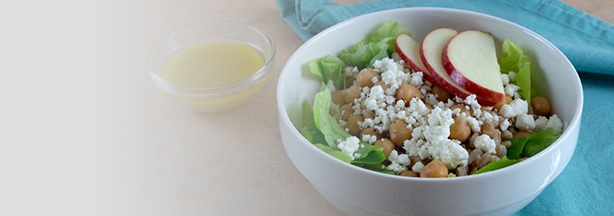Potassium and Chronic Kidney Disease
What is potassium and what does it do in the body?
Potassium is a mineral that controls nerve and muscle function. The heart beats at a normal rhythm because of potassium. Potassium is also necessary for maintaining fluid and electrolyte balance and pH level.
In order for potassium to perform these functions, blood levels must be kept between 3.5 and 5.5 mEq/L. The kidneys help keep potassium at a normal level.
When is potassium too low or too high?
Low potassium
Potassium comes from the foods we eat. Healthy kidneys remove excess potassium in the urine to help maintain normal levels in the blood.
Because most foods have potassium, low potassium (hypokalemia) is uncommon in people who eat a healthy diet.
Some of the effects of low potassium include muscle weakness, cramping and fatigue.
High potassium
When kidneys fail they can no longer remove excess potassium, so the level builds up in the body. High potassium in the blood is called hyperkalemia, which may occur in people with advanced stages of chronic kidney disease (CKD). Some of the effects of high potassium are nausea, weakness, numbness and slow pulse.
For people with stage 5 CKD (also known as end stage kidney disease or ESKD), dialysis is necessary to help regulate potassium. Between dialysis treatments, however, potassium levels rise and high-potassium foods must be limited.
Have your potassium levels checked regularly and ask your renal dietitian or doctor about your potassium results.
How to prevent potassium levels from getting too high
Here are things you can do to keep your potassium at safe levels:
- Talk to your renal dietitian about creating an eating plan.
- Limit foods that are high in potassium.
- Limit milk and milk products or replace with nondairy substitutes.
- Discard liquids from canned fruits and vegetables.
- Avoid salt substitutes and other seasonings with potassium.
- Read labels on packaged foods and avoid potassium chloride.
- Pay attention to serving size.
- Don’t skip dialysis or shorten treatment times.
- Leach high-potassium vegetables to remove some of the potassium. To learn how, watch our “How to Lower Potassium in Potatoes” video on our Diet & Nutrition Videos page.
What to eat and what to limit
The suggestions and lists below are some high- and low-potassium foods.
| Food Type | Tip |
|---|---|
|
Fruit |
|
|
Vegetables
|
|
|
Dairy
|
|
|
Miscellaneous
|
|
High-potassium foods
Limit high-potassium foods or talk with a kidney dietitian about how to incorporate these foods into your diet.
Watch our “High-Potassium Vegetable Substitutions for the Kidney Diet” video to learn more about which high-potassium vegetables to avoid, and which low-potassium vegetables you can use as substitutes.
| Food Type | High-potassium foods |
|---|---|
|
Fruits
|
|
|
Vegetables
|
|
|
Dairy
|
|
|
Miscellaneous
|
|
Low-potassium foods
Ask your dietitian about the amount you can safely eat.
| Food Type | Low-potassium foods |
|---|---|
|
Fruits |
|
|
Vegetables |
|
|
Dairy substitutes |
|
|
Snacks |
|
DaVita.com’s Diet & Nutrition section has free tools and resources to help you stick to a kidney-friendly diet. Search tasty, low-potassium recipes and use the Food Analyzer tool to look up nutrient information (such as potassium and phosphorus) for thousands of foods.
This article is for informational purposes only and is not a substitute for medical advice or treatment. Consult your physician regarding your specific diagnosis, treatment, diet and health questions.
Related articles on DaVita.com

Download
Cookbooks

Eating Out
Guides
See kidney-friendly food and drink choices to consider when eating out at your favorite restaurants. Choose from 12 cuisine types.
